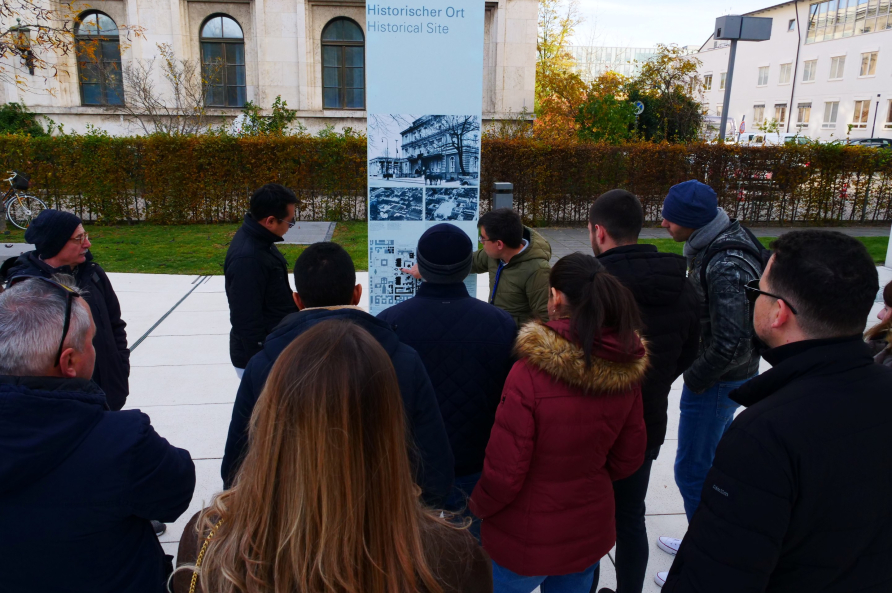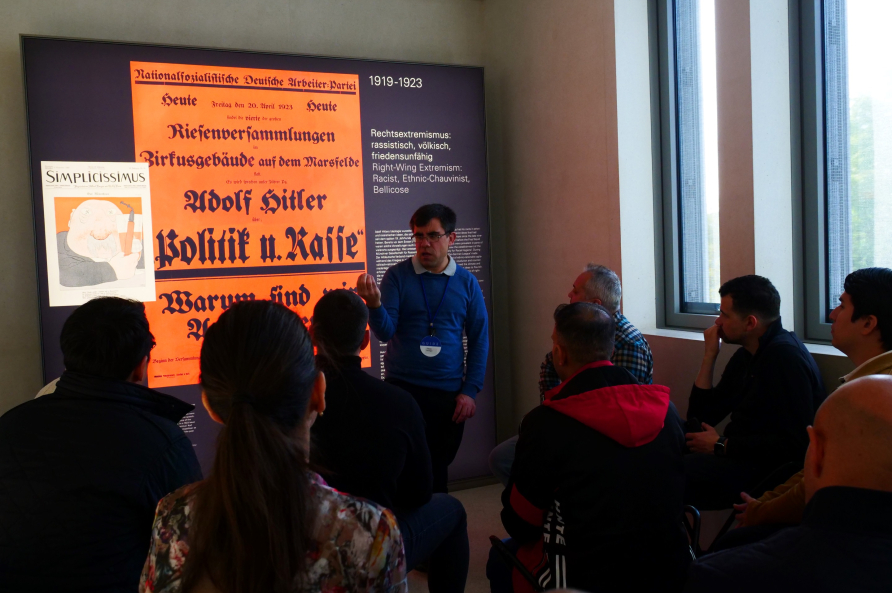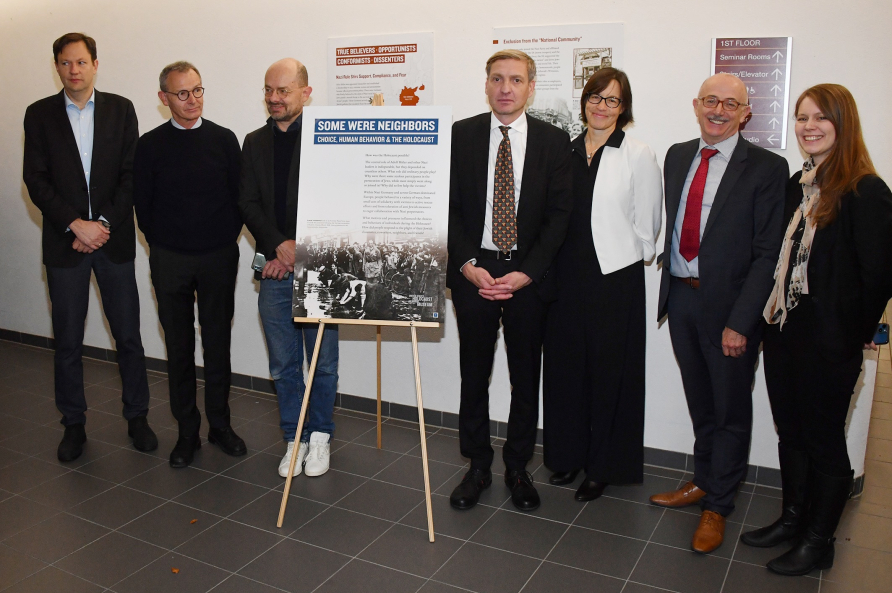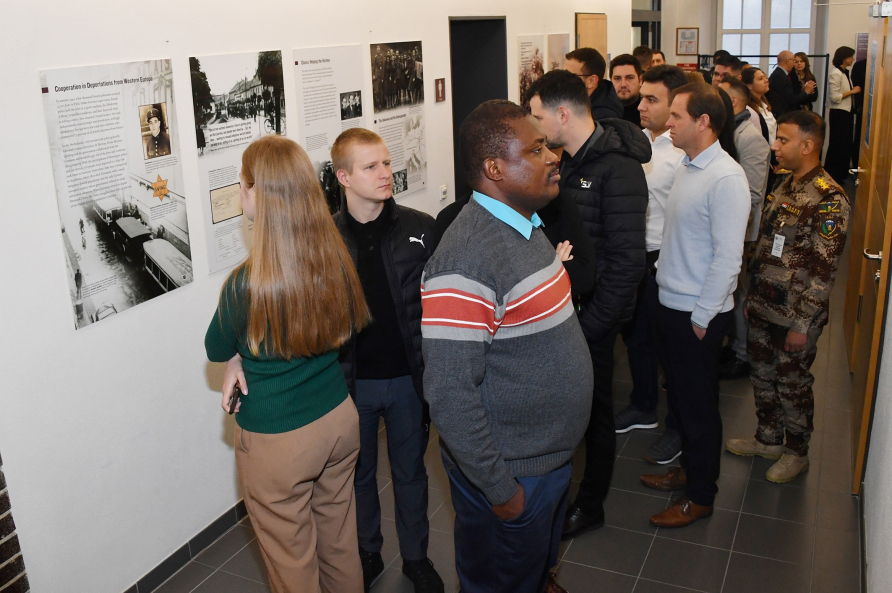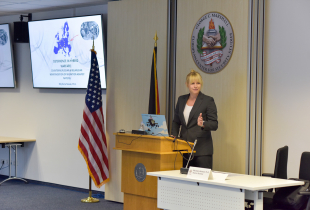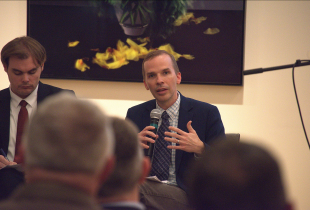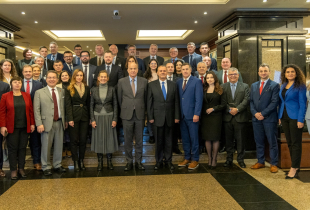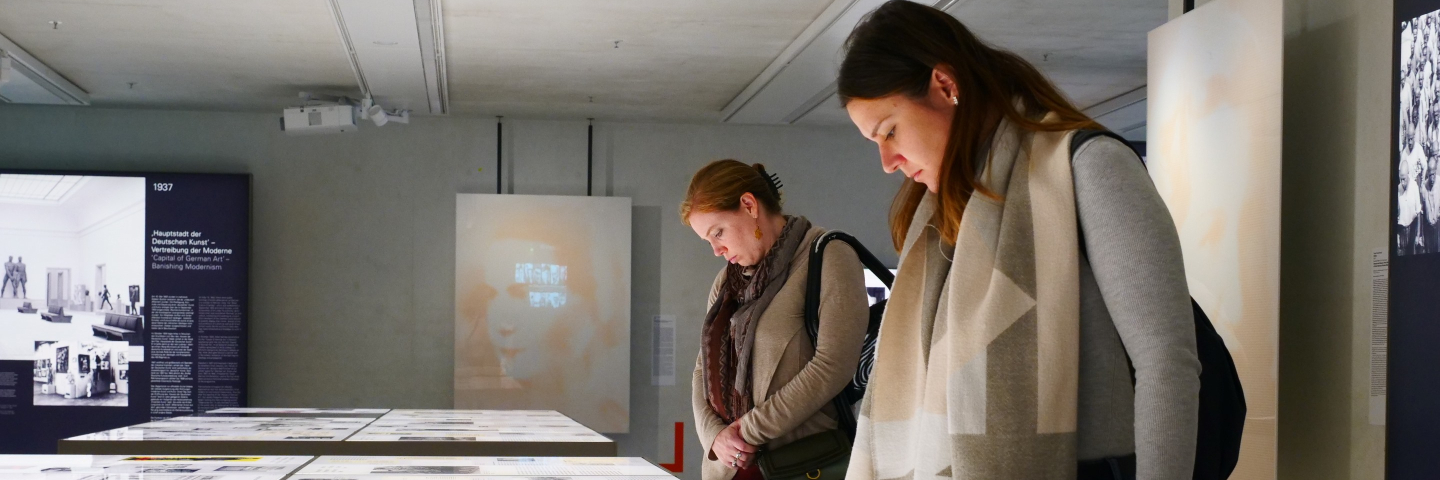
Participants Visit Memorial During Anniversary of Attempted Coup
Nearing the end of a week focused on mass atrocities and genocides, the George C. Marshall European Center for Security Studies’ Program on Applied Security Studies class visited The Munich Documentation Center for the History of National Socialism Nov. 9, 2023.
The visit coincided with the 100th anniversary of Hitler’s first attempt to overthrow Weimer Republic, dubbed the Beer Hall Putsch. The coup was ultimately unsuccessful but it left an indelible mark that, 10 years later, led to Hitler coming to power.
The important question, the Documentation Center asks, is “How was it possible for Nazis to seize power 10 years later?” It’s a question Germans have wrestled with several generations later, an effort that Col. Konrad Lau, director for PASS, wants the students to see firsthand.
“We are here to analyze reasons and triggers for genocide and mass atrocities,” he said. “We also want to show our participants the possibilities of the culture of remembrance and education.”
For the visit the Documentation Center, oriented deep in the heart of the third largest city in Germany, the PASS students were split into three groups and led via guides around the permanent exhibition. Starting on the fourth floor and working their way down, the students carried folding chairs with them. Each section of the Documentation Center has multiple displays, allowing some to sit on the chairs and listen to the explanations from the guide.
One such guide, Tobias, invited the participants to compare the present to the past in order to make sense of the tragedy. At one particular stop in front of a propaganda poster from the 1920s, he asked his group to think about the hallmarks of a dictatorship. “Who are the enemies of communism?” he asked. The answer, he said, was anyone who would oppose them, politicians included.
It’s comparisons like this, of the past to the present and into the future, that Col. Lau and his PASS team encourage when using Nazi Germany and the Holocaust as a case study. Memorials such as the Documentation Center are littered all over Germany, a monument to history that shines an unflinching spotlight on the atrocities perpetrated on European citizens across the continent. Using stark, direct language, these memorials parse out each event and attitude that contributed to the rise of, as Col. Lau calls it, “the dark times.”
To start the week, the Marshall Center, in cooperation with the United States Holocaust Memorial Museum, opened a temporary Holocaust exhibit at the Nick Pratt Hall, the second year in a row that PASS has worked with USHMM on the display.
It’s vitally important that we understand the history surrounding Nazi Germany, says Jennifer Ann Ciardelli, the director of the Initiative on the Holocaust and Professional Leadership. In her session following the opening of the exhibition, she elaborated on the background of the Holocaust and the legal and ethical responsibility of security practitioners to prevent the reoccurrence of such atrocities.
“If we do not understand the historical context, we are at a disadvantage,” she said.
That’s why, as Tobias pointed out in his tour, we must remember that the Holocaust was “not the idea of one man alone.”
“The Holocaust could not have happened without Hitler and the Nazi elite,” Ciardelli explained. “It also required a broad range of active or passive support from a range of people/professionals within and beyond Nazi Germany.” Security professionals not unlike the PASS participants.
Of course the Holocaust is just one case study of genocide. The history of the world is full of mass atrocities. And they continue to happen today. So how do we stay on top of such potential?
This is where Ciardelli and the Early Warning Project comes in. Launched in 2015 as a partnership between the Holocaust Museum and Dartmouth College, the main premise for EWP is that effective early warning is necessary for the prevention of genocide and related mass atrocities. The Early Warning Project uses quantitative and qualitative methods to assess and spotlight the risk of mass atrocities in countries around the world.
“This is the first publicly available tool of its kind,” said Ciardelli. The U.S. Holocaust Memorial Museum’s Simon-Skjodt Center for the Prevention of Genocide intended for the EWP to be a resource for early warning that can be used as an aid to help policymakers focus time and attention on countries with the highest risk.
“Our annual Statistical Risk Assessment was named in the Global Fragility Act as a source to help the US government select priority countries, and the interagency Atrocity Prevention Task Force says they now use our assessment to help focus their work,” Ciardelli said.
In the greater context of the rise of antisemitism across Europe, this PASS week could not have come at a more important time.
“My intent is for them to see and understand the triggers,” said Lau, “and to see whether we have parallel developments or indicators in our time.” And, he added, ideas for what can be done to avoid travelling down that same path that started 100 years ago.
